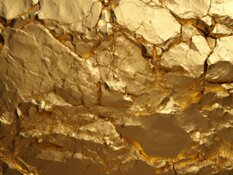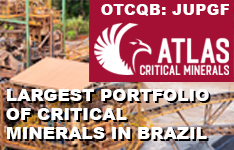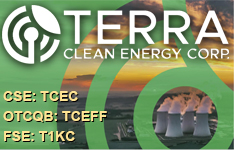The Mining Report: Over the last 30 years you've been involved in a number of natural resource mining companies as an executive officer, board member and/or investor in your position as managing director at Clarion Finanz, including some controversial projects that made headlines both when they did well and when they failed. Has the structure around junior mining investing changed during that time?
Carlo Civelli: Yes, it certainly has. We have invested in about 900 companies in the last 35 years with commitments ranging from $100,000 to $60 million ($60M). Of course some of them failed, but the majority did well.
We have been involved in every single aspect of financing juniors, including the use of shell companies and mezzanine financing. I was one of the first Europeans to invest in Canadian mining companies and oil and gas companies in the 1980s. At the time there was absolutely no appetite for them. We created the appetite in Europe through our success as an investment company based in London and Zurich. Later a lot of other brokerages moved in the same direction, including Yorkton Securities, where I was a director along with now billionaire investor Frank Giustra, who was named chairman and CEO in 1995.
"Callinex Mines Inc. is onto something that could be very interesting."
Today, I don't see anybody in Europe interested in junior mining or oil companies. The little guys have vanished. The market has become totally illiquid and I think the same can be said about the Canadian markets. When I talk to my friends in the brokerage industry in Vancouver or Toronto or Calgary, they all say that there's no appetite. Only stocks with production and reserves are doing well in this market. The market doesn't want to hear about a company until it has found the resource. Certainly, the last couple of years have been the worst market that I have seen in my 35 years in the industry.
TMR: Do you see current conditions as an opportunity for investors looking for deals as Rick Rule says, or do you see it as a crisis that needs to find new ways to get financing?
CC: I think that there are opportunities out there, but it can be difficult to spot them. Too many companies are doing exactly what they did in 2000; they are just sitting on cash and paying the management nice salaries, but they're not putting any money in the ground. That is one thing that an investor should look at before making an investment. How much money is the management taking out of the company? What are the general and administrative costs and how much money is actually going into the ground?
TMR: Have regulations made investing safer and more transparent or have they made it more difficult for companies to raise money and placed a burden on small companies for reporting costs?
CC: They have made it more difficult to raise money, but at the same time the public is more protected. The NI 43-101s that companies have to produce today at least give insight into what drilling could reveal. My mentor, Mike Muzylowski, chairman of Callinex Mines Inc. (CNX:TSX.V; CLLXF:OTCQX), says you have to put the truth machine on, meaning the drilling rig, because despite evidence from 3-D seismic and surface anomalies and the like, you don't know what's really there until you pull it out of the ground.
"Terra Nova Energy Ltd.'s 3-D seismic tests compare favorably with one of the best producing portions of neighboring Senex."
In the past, stocks would move when the company announced it was putting a drill rig on the property. Unfortunately that is no longer the case, but it certainly means that companies today have to do a lot more intelligent work to attract investing money. The money has become much more sophisticated.
TMR: If there were to be a huge discovery, could that attract investors back to the market in the U.S., Canada and Europe?
CC: Yes, but it may not work the way it did in the past. In 2000, gold hit $250 per ounce ($250/oz) and all the stocks were down; we did do some very good investing at that time. Then there were a couple of discoveries and that lifted the entire market. Today I don't think one discovery would do it because commodity prices are down and there's no change in sight. I don't see the gold market going up anytime soon. I think gold has lost its luster.
You can see it also in the compression of the price-earnings ratios of the gold companies. They used to be at 40 to 50. Today they trade just like a copper stock. They have just become commodity plays. Gold is no longer an inflation play and no longer gets special attention. Now it trades purely based on fundamentals, i.e., the cost of production and the outlook for the underlying commodity. So it comes down to bringing down the price to produce an ounce as much as possible. At $800–1,000/oz there just isn't much profit in $1,200/oz gold. A big discovery that could produce for $500/oz could attract attention, but at these prices a lot of gold with the same low margin won't make a big splash.
Some low-cost producers are already attracting attention and the Osisko Mining Corp. takeover is an example. There are going to be more takeovers because it's much cheaper today to take over an existing mine with a nice resource then to go out and drill it yourself. The same is happening in the oil sector as well.
TMR: Will favorable exchange rates and lower energy costs help the bottom lines of Canadian companies to reduce those production costs?
CC: Yes, but when the underlying commodity price is coming down faster than the costs are coming down, it doesn't do much for the overwhelming negative sentiment.
TMR: You seem to have found some Canadian-listed companies that you like. What have you invested in there?
CC: We were lucky—and it really was luck rather than smarts—to sell near the top. In the past couple of months we have started going back in to a few select companies we think can do well. One example is HudBay Minerals Inc. (HBM:TSX; HBM:NYSE). When it dropped down to $8/share, that was a huge buying opportunity.
Another one we have bought into is Kirkland Lake Gold Inc. (KGI:TSX), which has fallen from $20/share to as low as $4. It has become a show-me stock, but I think the company will be able to show it. We are long-term investors.
Another one I like is in the diamond sector, Mountain Province Diamonds Inc. (MPV:TSX). Last week we got a bad surprise with a rights issue that turned out to be bigger than we had anticipated, but it's a long-term buy so it has time to work itself out.
A very small company we have invested in is CB Gold Inc. (CBJ:TSX.V) in Colombia. That could be on the way to becoming a bigger company. It has very good management and a nice discovery.
The Canadian company I am really involved in is Callinex Mines, which spun off from Callinan Royalties Corp. (CAA:TSX.V), a company founded by Mike Muzylowski. He is in the Canadian Hall of Fame because he discovered 10 mines in the Flin Flon area. Mike found the Trout Lake mine when he was working at HudBay some 40 years ago. HudBay has spent over $1.6 billion in that area and has been mining there for the last 90 years and is running out of ore. It needs more reserves for its strategic smelter. The Callinex claims include a major portion of the Flin Flon district not explored by HudBay and are located within three kilometers of this smelter.
Callinex also has several shared targets with HudBay and several past-producing mines. Mike Muzylowski believes strongly that resources like Trout Lake always appear in clusters. The Pine Bay project is polymetallic volcanogenic massive sulfide geology, which contains copper, zinc, gold and silver. This reduces the commodity risk and plays into HudBay's strengths since it recently built a new zinc processing facility.
I believe that this is a company where the 3Ps come together: the price of the stock is right, the property is right and the promoter or management is right. Callinex has some very good managers and some very good geologists. I am on the advisory board and my son, Nico, is VP of finance and a director. The drilling program is fully funded and is about to commence. Test results should be back in April or May. I believe that Callinex is onto something that could be very interesting. This is why I have put a lot of money into the company and we are willing to continue to fund it. A project like this takes time. But eventually, I think HudBay will be interested as a joint-venture partner or an acquirer.
TMR: Is that the ultimate goal, like your previous project, to sell before it goes into production?
CC: Yes. I don't want to get involved in putting a mine into production. We find it and then we sell it to the highest bidder. I have invested in companies run by Mike Muzylowski for 30 years. Four of them have been developed and then sold. We are doing exactly the same again here.
TMR: What is your forecast for oil?
CC: I think oil will stay down for longer than people expect. All the small U.S. shale companies seem to have hedged their production, obviously at the request of their investment bankers, for 12 to 18 months. That means that they can go on drilling at least until the end of this year. When the hedge runs out, they will really be in trouble and may have to reduce production quite dramatically.
Let's face it, 90 million barrels (90 MMbbl) are produced per day today in the world. The overhang is only 1.5 MMbbl. It wouldn't take much for that overhang to go away and the price to recover. Saudi Arabia could eliminate the whole overhead by reducing output 10% and make just as much money. But it is playing the game of getting market share and testing to see how much pain the U.S. shale producers can take. You can see it already happening in the reduction of the drill rates. High-cost offshore exploration has stopped, which means that production that could have come on stream in the next couple of years won't be there. OPEC then has more power.
I think sometime next year we're going to go back to $70 per barrel ($70/bbl) and we're probably going to stay there. But that is good enough. It's a shot in the arm of the world economy. At $70/bbl you can produce very profitably.
TMR: What oil companies are you invested in?
CC: In the oil sector, we have positions in PetroAmerica Oil Corp. (PTA:TSX). In the U.S., we have invested in Synergy Resources Corp. (SYRG:NYSE.MKT), which has weathered the downturn very well, meaning it is still trading at where it was four months ago, which is unusual.
I am a senior adviser and have a directing trust and a big interest in a little Canadian company called Terra Nova Energy Ltd. (TGC:TSX.V; TNVMF:OTCQX), which we started investing in three years ago and we keep buying it. The company owns two large concessions in the Cooper Basin in Australia, which is heating up quickly. In the last few years some of our neighbors, including Senex Energy Ltd. (SXY:ASX), Beach Energy Ltd. (BPT:ASX) and Drillsearch Energy Ltd. (DLS:ASX) have had impressive drill successes. Some of the wells are very big. Magnum Hunter Resources Corp. (MHR:NYSE.MKT) and Seven Group Holdings Ltd. (SVW:ASX) recently bought into some of our neighbors.
I'm privy to some of the information from our technical staff and it looks promising. We ran 3-D seismic tests on about 20,000 acres of PEL 444, which has a total of 582,000 acres, and found that it compares favorably with one of the best producing portions of neighboring Senex, an AU$400M company that has reported 13.3 MMbbl of reserves on a fraction of the acreage Terra Nova controls. As I said before, that doesn't mean anything until you put the drilling rig in, but we are set to do that in the next three months. Through one of my companies, Perseville Investing, I just invested $3M and now Terra Nova has enough money to drill three wells at least, although we are talking to partners who could pitch in enough to get to five or six wells.
TMR: In addition to your direct investments, your son is the VP of finance and a director for this company. Your recent investment included first right of refusal on investing in future drills there. Why are you so committed to this company?
CC: I got involved a couple of years ago. I brought in the same management that I had on my holding company, Pacific LNG Operations Ltd., which was very active in Papua New Guinea and sold nicely last year. Terra Nova is run by acting CEO Henry Aldorf, who was president of Marathon Oil International and Unocal Thailand. Our technical advisers are veterans from Pacific Rubiales Energy Corp. (PRE:TSX; PREC:BVC), the Colombian company we helped fund back in 2007. We have a strong shareholder base. We believe that we are on the right track and there should be some very exciting news by the middle of the year. We should start drilling in May and have news by August. We believe we are identifying a unique new channel system. I think that this year could be very exciting.
We have told Terra Nova management that we will continue to fund the company either through private placements or by taking a direct interest in the underlying concession, which is exactly what we did in Papua New Guinea years ago. In addition to our large investment in the company, we also owned 20% of the underlying acreage. When the company found a huge gas discovery, we sold our 20% interest to Oil Search Ltd. (OSH:ASX) last year for a very nice profit. We are looking to do the same here. I want to have a separate drilling fund where we fund these companies that we believe in, and we fund then either the company or we invest directly in the asset.
My company, Pacific LNG Operations in Singapore, is still involved in drilling in Papua New Guinea as a partner with InterOil. We started a new company called Pacific Hunt Energy with Henry Aldorf as chairman and CEO, and my son, Nico, is on that board as well. We bought two concessions in Myanmar that together are the size of Switzerland. We are raising $40–50M privately to do the initial groundwork, seismic studies and reporting about drilling going back to 1912. Eventually we will take this company public, too. I like to be an early investor with all the risks attached to it, but I'm also a long-term investor. I'm not afraid to put my money where my mouth is, take risks and help the companies along through the ups and downs that are inevitable in this market.
TMR: What is your parting advice for investors looking to find the few companies that can be successful in this environment?
CC: The most important aspect is management because good management can turn even a bad company around, whereas bad management can turn a good property into a disaster. Stick to management; eventually it will lead you to a success.
TMR: Thank you for your time.
Carlo Civelli is the founder of Zurich-based Clarion Finanz AG and has over 30 years of experience in the venture capital and natural resources sector. During that time, Clarion Finanz AG financed hundreds of companies, mainly mining and oil and gas explorers, and at least a dozen of these early-stage investments developed into ~billion dollar market-cap companies that are still listed, while others have been taken over by resource majors. Civelli also founded Pacific LNG Operations Ltd. in 2005, which on Feb. 25, 2014, sold its 22.8% interest in a gas field in Papua New Guinea, developed jointly with InterOil Corporation (IOC:NYSE), to Oil Search Ltd. for $900 million plus further contingent payments. He is a Swiss national and a resident of Singapore.
Read what other experts are saying about:
Want to read more Mining Report articles like this? Sign up for our free e-newsletter, and you'll learn when new articles have been published. To see recent interviews with industry analysts and commentators, visit our Mining Report home page.
DISCLOSURE:
1) JT Long conducted this interview for Streetwise Reports LLC, publisher of The Gold Report, The Energy Report, The Life Sciences Report and The Mining Report, and provides services to Streetwise Reports as an employee. She owns, or her family owns, shares of the following companies mentioned in this interview: None.
2) The following companies mentioned in the interview are sponsors of Streetwise Reports: Callinex Mines Inc. and Terra Nova Energy Ltd. Streetwise Reports does not accept stock in exchange for its services.
3) Carlo Civelli: I own, or my family owns, shares of the following companies mentioned in this interview: All. I personally am, or my family is, paid by the following companies mentioned in this interview: Callinex Mines Inc. My company has a financial relationship with the following companies mentioned in this interview: Callinex Mines Inc. and Terra Nova Energy Ltd. I was not paid by Streetwise Reports for participating in this interview. Comments and opinions expressed are my own comments and opinions. I determined and had final say over which companies would be included in the interview based on my research, understanding of the sector and interview theme. I had the opportunity to review the interview for accuracy as of the date of the interview and am responsible for the content of the interview.
4) Interviews are edited for clarity. Streetwise Reports does not make editorial comments or change experts' statements without their consent.
5) The interview does not constitute investment advice. Each reader is encouraged to consult with his or her individual financial professional and any action a reader takes as a result of information presented here is his or her own responsibility. By opening this page, each reader accepts and agrees to Streetwise Reports' terms of use and full legal disclaimer.
6) From time to time, Streetwise Reports LLC and its directors, officers, employees or members of their families, as well as persons interviewed for articles and interviews on the site, may have a long or short position in securities mentioned. Directors, officers, employees or members of their families are prohibited from making purchases and/or sales of those securities in the open market or otherwise during the up-to-four-week interval from the time of the interview until after it publishes.











































